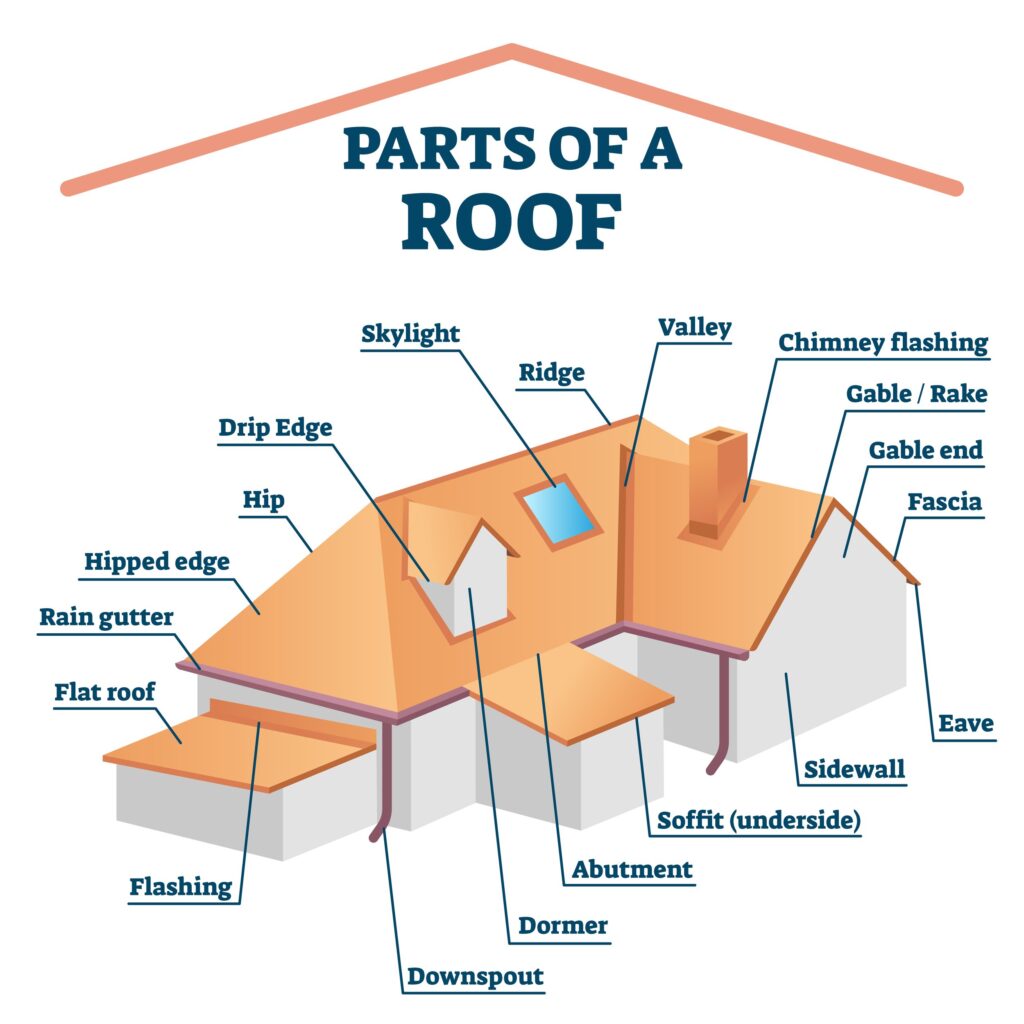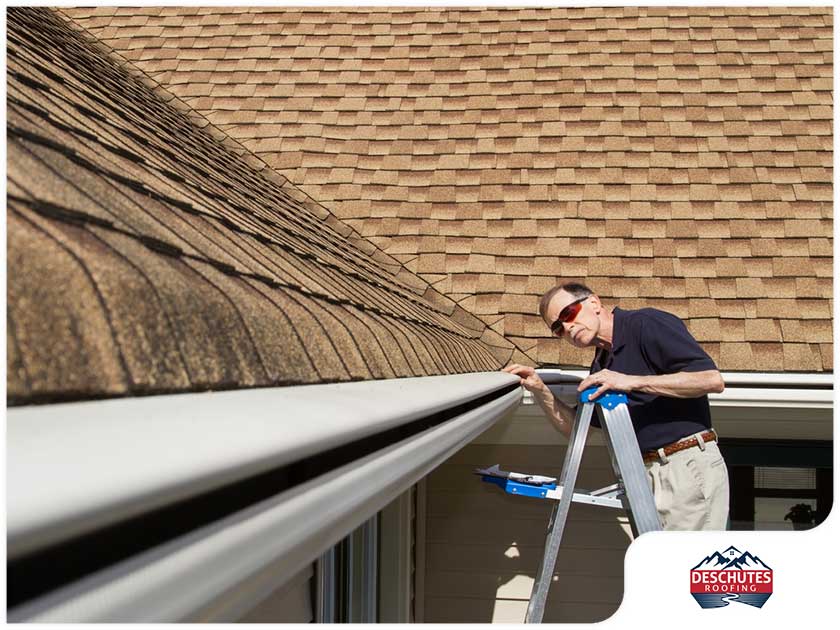Ever wondered how long a 25-year roof actually lasts? Well, you’re in luck! This article aims to shed some light on the true lifespan of a roofing system that is labeled as a 25-year roof. Whether you’re a homeowner looking to replace your roof or simply curious about the durability of different roof types, read on to discover the reality behind the numbers and get a better understanding of what to expect from your roof.
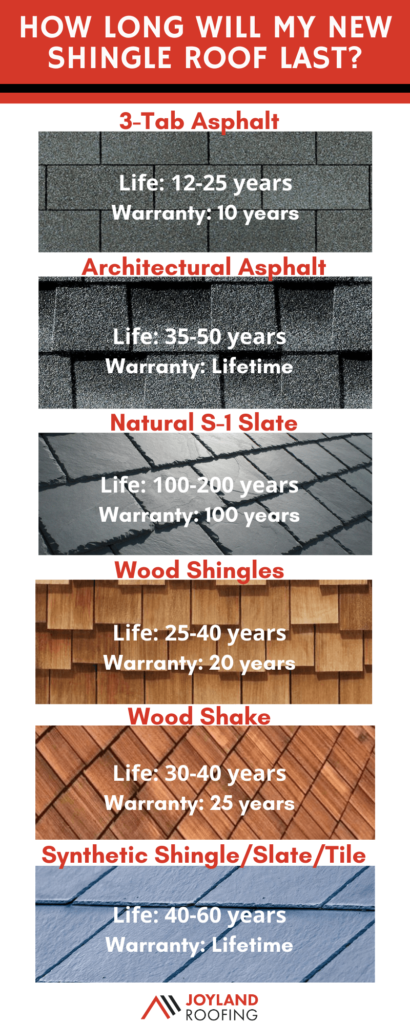

Factors Affecting Roof Lifespan
When it comes to the lifespan of a roof, there are several factors that can greatly influence how long it will last. From the type of roofing material to the climate conditions it is exposed to, each factor plays a crucial role in determining the longevity of your roof. By understanding these factors, you can make informed decisions to maximize the lifespan of your roof and ensure the protection of your home.
Roofing Material
One of the most significant factors affecting the lifespan of your roof is the type of material used. Different roofing materials have varying levels of durability and resistance to wear and tear. Some commonly used materials include asphalt shingles, metal roofs, tile roofs, and wood shakes. Each of these materials has its own pros and cons and can last different lengths of time.
Installation Quality
The quality of the installation is another crucial factor that determines how long your roof will last. Even the most durable roofing materials can fail prematurely if they are not installed properly. It is essential to hire a professional roofing contractor with experience and expertise to ensure that your roof is installed correctly. A poorly installed roof can develop issues such as leaks and premature deterioration, significantly reducing its lifespan.
Climate Conditions
The climate conditions that your roof is exposed to can have a significant impact on its durability. Extreme temperatures, high winds, heavy rain, and snow can all take a toll on your roof over time. For example, in areas with frequent hailstorms, roofs may be more susceptible to damage. Understanding the climate conditions in your area and selecting a roofing material that is suitable for those conditions can help extend the lifespan of your roof.
Maintenance
Regular maintenance is essential for preserving the lifespan of your roof. Neglecting routine inspections and maintenance can lead to minor issues escalating into more significant problems that may require a complete roof replacement. It is recommended to have your roof inspected by a professional at least once a year to identify any potential issues and address them promptly. Additionally, keeping your roof clean and free from debris can help prevent damage and prolong its lifespan.
Average Lifespan of Different Roofing Materials
The lifespan of a roof varies depending on the type of material used. Here’s a breakdown of the average lifespan for different roofing materials:
Asphalt Shingles
Asphalt shingles are one of the most common roofing materials due to their affordability and versatility. On average, asphalt shingle roofs can last between 15 to 30 years. The lifespan of an asphalt shingle roof depends on factors such as the quality of the shingles, the installation, and the climate conditions.
Metal Roofs
Metal roofs are known for their durability and longevity. Depending on the type of metal used, a metal roof can last anywhere from 30 to 70 years or more. Metal roofs are highly resistant to extreme weather conditions and require minimal maintenance, making them an excellent option for homeowners looking for a long-lasting and low-maintenance roofing solution.
Tile Roofs
Tile roofs are known for their aesthetic appeal and longevity. With proper installation and maintenance, a tile roof can easily last 50 years or more. However, it is important to note that the lifespan of tile roofs can be influenced by the quality of the tiles themselves, as well as the support structure on which they are installed.
Wood Shakes
Wood shakes are a popular choice for homeowners who desire a rustic look. However, wood shakes have a shorter lifespan compared to other roofing materials. On average, wood shakes can last between 20 to 40 years, depending on factors such as the type of wood, climate conditions, and proper maintenance. Regular inspections and treating the wood shakes with preservatives can help extend their lifespan.


Signs Your Roof Needs Replacement
Knowing when it’s time to replace your roof is crucial to avoid potential issues and costly repairs. Here are some signs that indicate your roof may need replacement:
Leakage
One of the most obvious signs that your roof needs replacement is water leakage. If you notice water stains on your ceilings or walls, it could indicate a roof leak. Leaks can occur due to damaged or deteriorated roofing materials or improper installation. If left unaddressed, leaks can lead to significant structural damage and mold growth.
Missing or Damaged Shingles
Missing or damaged shingles are another clear indication that your roof is in need of replacement. Shingles can become dislodged or damaged due to age, strong winds, or impact from falling debris. If you notice multiple missing or damaged shingles, it’s a sign that your roof’s protective barrier has been compromised and replacement is necessary.
Sagging or Warping
A sagging or warped roof is a serious issue that requires immediate attention. It could indicate structural problems or water damage within your roof. A sagging roof is a safety hazard and should be addressed as soon as possible to prevent further damage or collapses. If you notice any signs of sagging or warping, it’s essential to have a professional inspect your roof.
Excessive Moss or Algae Growth
While moss and algae growth may not seem like a significant concern, they can actually cause serious damage to your roof. Moss and algae can retain moisture, leading to the deterioration of roofing materials over time. If you notice excessive moss or algae growth on your roof, it’s a sign that your roof is vulnerable and may need replacement.
Tips to Extend the Lifespan of a 25-Year Roof
While the average lifespan of a 25-year roof depends on various factors, there are steps you can take to maximize its longevity. Here are some tips to help extend the lifespan of your 25-year roof:
Regular Roof Inspections
Regular roof inspections by a professional can help identify any issues early on and ensure timely repairs. Aim to have your roof inspected at least once a year, or after severe weather events. Detecting and addressing minor problems before they turn into major issues can significantly extend the lifespan of your roof.
Cleaning and Maintenance
Keep your roof clean and free from debris, such as leaves and branches, to prevent water buildup and potential damage. Remove any moss or algae growth using appropriate cleaning methods. Additionally, clean out your gutters regularly to prevent water from backing up and causing damage to your roof.
Addressing Issues Promptly
If you notice any signs of damage or deterioration on your roof, such as missing shingles or leaks, address them promptly. Ignoring small issues can lead to more extensive damage, requiring a complete roof replacement. Repairing minor problems as soon as they arise can help extend the lifespan of your roof.
Proper Attic Ventilation
Ensure that your attic is properly ventilated to prevent heat and moisture buildup. Excessive heat and moisture can lead to the premature deterioration of roofing materials. Proper ventilation allows for air circulation, keeping your roof cooler and reducing the risk of damage.


Roof Replacement Options
When it comes to replacing your roof, you have two primary options: re-roofing and tear-off and replacement. Each option has its own advantages and disadvantages, and the best choice for you will depend on your specific circumstances.
Re-Roofing
Re-roofing involves installing a new layer of shingles over the existing roof. This option is more cost-effective and faster than tear-off and replacement. Re-roofing is suitable when the existing roof is still in good condition but needs an aesthetic refresh. However, re-roofing is not recommended if there are significant structural issues or if the current roof already has multiple layers of shingles.
Tear-Off and Replacement
Tear-off and replacement, as the name suggests, involves completely removing the existing roof down to the decking and installing a new roof. This option allows for a thorough inspection of the underlying structure and ensures that any issues are addressed before installing the new roof. Tear-off and replacement typically provide improved aesthetics and durability. However, it comes at a higher cost and longer installation time compared to re-roofing.
Pros and Cons of Re-Roofing
Re-roofing offers several advantages, making it an attractive option for homeowners. Here are some pros and cons to consider:
Pros: Cost Savings, Faster Installation
Re-roofing is generally less expensive than tear-off and replacement since it eliminates the need for labor-intensive removal of the existing roof. It also requires less time to complete, resulting in fewer disruptions to your daily routine.
Cons: Added Weight, Limited Inspections
One potential con of re-roofing is that it adds weight to your roof. If your roof already has multiple layers of shingles, adding another layer can exceed weight limitations. Additionally, re-roofing does not allow for a thorough inspection of the underlying structure, which means that any significant issues may go unnoticed.
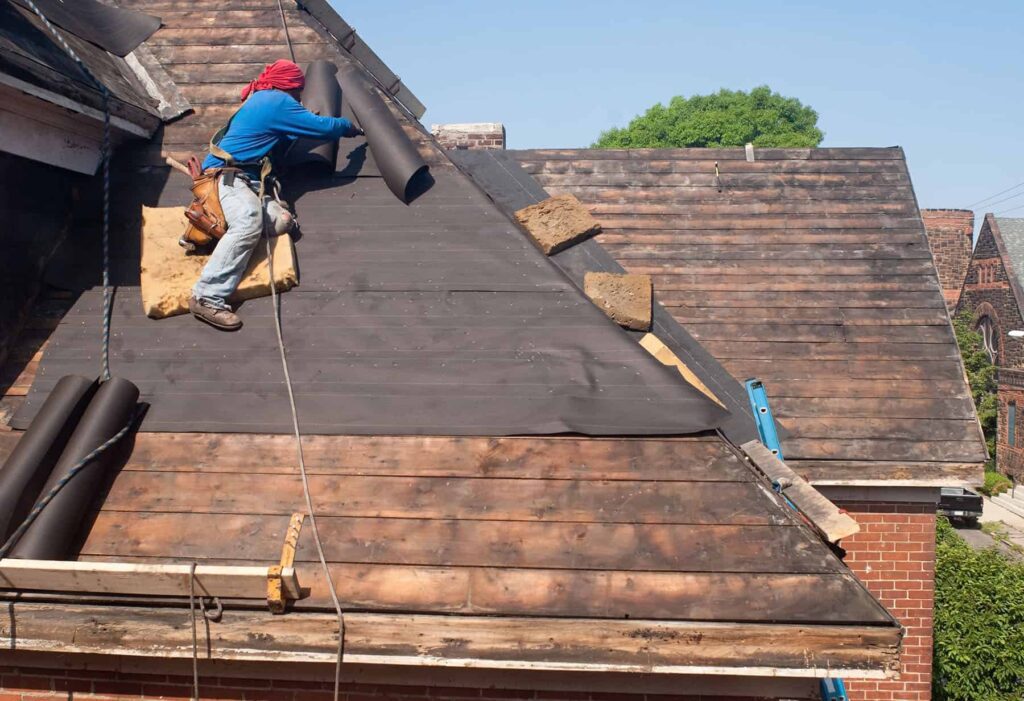

Pros and Cons of Tear-Off and Replacement
Tear-off and replacement have their own set of advantages and disadvantages. Consider the following before deciding:
Pros: Thorough Inspection, Improved Aesthetics
By completely removing the existing roof, tear-off and replacement allow for a thorough inspection of the underlying structure. This ensures that any issues are properly addressed before installing the new roof. Additionally, tear-off and replacement provide an opportunity to improve the aesthetics of your roof by selecting a new roofing material or design.
Cons: Higher Cost, Longer Installation
Tear-off and replacement involve more labor and materials, which can result in a higher overall cost compared to re-roofing. Additionally, the process of removing the existing roof and installing a new one takes longer, which may cause inconvenience and disruptions to your daily life.
When to Consider Roof Replacement
While regular maintenance and repairs can extend the lifespan of your roof, there will come a time when replacement is necessary. Here are two key factors to consider when deciding if it’s time for a roof replacement:
Age of the Roof
The age of your roof is an important factor to consider when determining whether it needs replacement. Even with proper maintenance, roofing materials naturally deteriorate over time. If your roof is approaching its expected lifespan, it may be more cost-effective and practical to invest in a replacement rather than constantly repairing aging materials.
Extensive Damage or Deterioration
If your roof has extensive damage or is exhibiting signs of significant deterioration, such as widespread leaks or missing shingles, it is a clear indication that replacement is necessary. Attempting to patch up a severely damaged roof may only provide a temporary fix, and the underlying issues will persist.
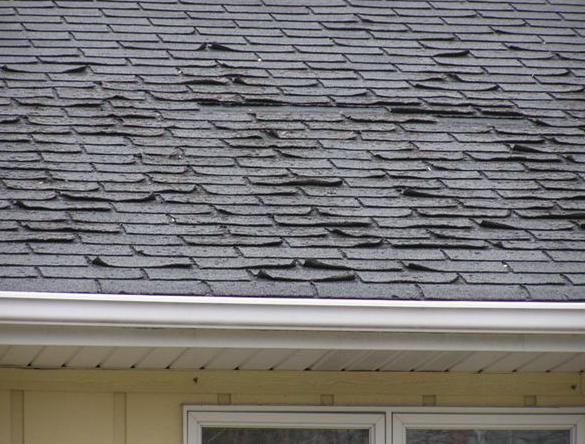

Choosing a Reliable Roofing Contractor
When it comes to roof replacement, it is crucial to choose a reliable and reputable roofing contractor. The quality of the installation plays a significant role in how long your new roof will last. Here are some factors to consider when selecting a roofing contractor:
Research and Reviews
Do thorough research and read customer reviews to assess the reputation of different roofing contractors in your area. Look for contractors with positive reviews and a proven track record of delivering high-quality workmanship.
License and Insurance
Ensure that the roofing contractor you choose is properly licensed and insured. A licensed contractor has met the necessary requirements and is more likely to adhere to industry standards and regulations. Insurance coverage protects you and the contractor in case of any accidents or damages that may occur during the roof replacement process.
Warranty Coverage
Ask about the warranty coverage offered by the roofing contractor. A reputable contractor should provide a warranty on both the materials and the installation. A comprehensive warranty gives you peace of mind knowing that any issues that arise will be addressed promptly.
Conclusion
The lifespan of your roof is influenced by various factors, including the quality of the roofing material, installation, climate conditions, and maintenance. Understanding these factors and knowing when it’s time to replace your roof can help you make informed decisions to ensure the longevity and protection of your home. Regular inspections, proper maintenance, and timely repairs are key to extending the lifespan of your roof. Whether you opt for re-roofing or tear-off and replacement, choosing a reliable roofing contractor is crucial for a successful roof replacement project. By considering all these factors, you can make the best decisions for your roof and enjoy a durable and long-lasting investment.


